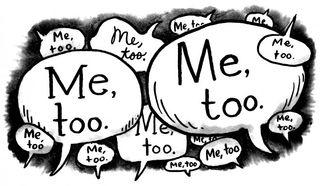Environment
#MeToo: Insights From Psychological Theory and Research
Understanding the nature of sexual harassment and Prevention by Dr. Masi Noor.
Posted November 29, 2017

The psychological and physical impact of sexual harassment on its victims and their close others is damaging and often long-lasting. The detrimental effects of sexual harassment are also costly for organizations and society at large amounting to millions of dollars due to legal costs, absenteeism, reduced productivity, and job turnover.
In the wake of the hashtag #metoo prompting famed and ordinary women and men to courageously disclose their experiences with sexual harassment, awareness of the pervasiveness of this insidious phenomenon has been raised, rekindling public debates about the why— and when—questions. SPSSI has responded with a Special Virtual Issue, curating a unique selection of recently published as well as classic articles from SPSSI’s journals, featuring psychologists who were leaders in the scholarship of sexual harassment. The selected articles inform the debates and offer analyses and insights into the problem of sexual harassment and its prevention, utilizing scientific theory and research. All of these articles are provided in an open-access format for a limited time.
Specifically, Muehlenhard and colleagues articulate what constitutes sexual coercion and whether certain definitions serve to advantage perpetrators over victims. Calogero and Tylka provide a thought-provoking account of sexual harassment through the lens of an ideological system that justifies the cultural practice of sexual objectification, whereby the target of sexual harassment is reduced to the function of pleasing others. Gervais and colleagues corroborate the negative effects of sexual objectification in a study that exposed participants to sexual objectification in a simulated work interview, but also linking these effects to benevolent sexism. Pryor and colleagues theorize that sexual harassment may be attributable to the combined contribution of organizational norms (tolerating sexual harassment) and the individual attributes of the perpetrators (cognitively linking social dominance with sexuality). Stockdale and Nadler explore the extent to which sexual harassment might be a form of a much broader set of experiences of interpersonal violence (e.g., past child abuse or intimate partner violence).
As such, the researchers argue that current or future sexual harassment may be predicted by past experiences of abuse and the risky behaviors that may ensue from these experiences making the individual further vulnerable to future exploitations. Murrell and colleagues examine the link between sexual harassment and other gender discrimination experiences among women with MBAs, revealing the striking finding that although more than one-third of their participants had actually experienced sexual harassment, these individuals reported never having experienced gender discrimination. Buchanan and colleagues review best practices that organizations can adopt to effectively reduce sexual harassment in the workplace, highlighting the importance of a clear and consistent anti-harassment message from organizational leaders.
Notably, SPSSI published some of the early and highly influential scholarship on sexual harassment over 35 years ago when sexual harassment was first being recognized as a social and legal wrong. The present Special Virtual Issue includes a sample of these classics, too. Tangri and colleagues reported the results of a study examining the prevalence and impact of sexual harassment at work in a large representative sample of federal workers, while Schneider's findings from surveys of lesbians and heterosexual working women uncovered the presence of sexual identity as a pertinent dimension in sexual harassment as well as highlighting the potential discrepancy between experiencing and disliking sexual harassment. Finally, Jensen and Gutek’s study shed light on the interesting differences in how personal blame is attributed as a function of having (vs. not having) been sexually harassed, gender, and traditional sex-role beliefs.
Taken together, this Special Virtual Issue not only demonstrates the diversity of perspectives and scholarship on this damaging phenomenon, but also offers practical ways to reduce its prevalence and give protection to potential victims.


